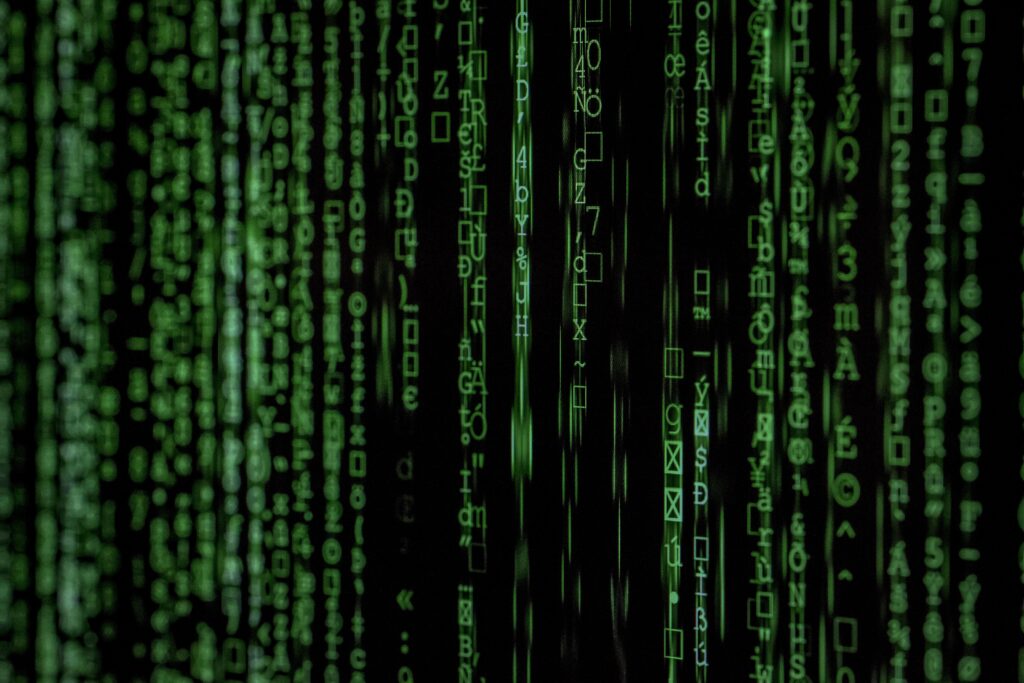In the digital era, where cyber threats have become more prevalent than ever, safeguarding your sensitive information is paramount. That’s where Cyber SIEM steps in – an innovative solution that enhances security measures against hacking. By monitoring networks, analyzing data, and promptly responding to potential breaches, Cyber SIEM minimizes the risk of unauthorized access and mitigates cyber attacks. With the constant advancements in hacking techniques, it’s crucial to stay one step ahead with the implementation of Cyber SIEM, ensuring the protection of your valuable data and maintaining the trust of your customers and partners.

Overview of Cyber Security Measures
Understanding the need for robust security measures
In today’s digital age, where technology and connectivity are integral parts of our lives, protecting sensitive information and data has become more critical than ever. Cyberattacks and hacking attempts have increased in frequency and sophistication, posing significant threats to individuals, organizations, and even governments. To counter these threats effectively, robust security measures are required to safeguard systems, networks, and data from unauthorized access, theft, or manipulation.
Types of cyber threats
Cyber threats come in various forms, ranging from malware and ransomware attacks to phishing scams and social engineering tactics. Hackers employ sophisticated techniques to exploit vulnerabilities in systems, applications, or human behavior to gain unauthorized access or extract valuable data. These threats can lead to severe consequences, including financial losses, reputational damage, and legal liabilities.
Importance of proactive security measures
Taking proactive security measures is crucial in mitigating the risks associated with cyber threats. By implementing robust security practices, organizations can reduce the likelihood of successful hacking attempts and protect their sensitive data. Additionally, proactive security measures ensure compliance with industry standards and regulations, instilling trust and confidence among customers, employees, and stakeholders.
Introduction to Cyber SIEM
Definition and purpose of Cyber SIEM
Cyber SIEM, which stands for Security Information and Event Management, is a comprehensive approach to monitoring, managing, and responding to cybersecurity incidents. It combines security information management (SIM), which involves collecting and analyzing security event data, and security event management (SEM), which provides real-time monitoring and alerts for security incidents. The purpose of Cyber SIEM is to enhance an organization’s security posture by effectively detecting, analyzing, and responding to potential threats and incidents.
Role of Cyber SIEM in enhancing security
Cyber SIEM plays a crucial role in enhancing security by providing organizations with a centralized platform to monitor and manage security events, identify threats, and respond promptly. It enables organizations to proactively detect and prioritize potential security incidents, reducing response times and minimizing the impact of cyberattacks. By collecting and analyzing security data from various sources, Cyber SIEM provides actionable insights that help organizations make informed decisions to enhance their overall security posture.

Key Components of Cyber SIEM
Security Information and Event Management (SIEM) system
The core component of Cyber SIEM is the SIEM system itself. It serves as a centralized platform that collects, aggregates, and analyzes security event logs from various sources, such as network devices, servers, and applications. The SIEM system uses advanced algorithms and machine learning techniques to identify patterns and anomalies that may indicate potential security threats.
Security Operations Center (SOC)
The Security Operations Center, or SOC, is a dedicated team or facility responsible for monitoring and responding to security incidents. It serves as the nerve center of Cyber SIEM, where security analysts analyze security events, investigate potential threats, and coordinate incident response activities. The SOC plays a critical role in ensuring the effectiveness of Cyber SIEM by providing skilled personnel to actively monitor security events and respond promptly to incidents.
Threat intelligence feeds
Threat intelligence feeds provide organizations with up-to-date information about known malicious actors, attack techniques, vulnerabilities, and emerging security threats. These feeds, obtained from trusted sources such as cybersecurity vendors, government agencies, and security research communities, supplement the SIEM system’s analysis capabilities. By leveraging threat intelligence feeds, organizations can enhance their ability to detect and respond to evolving cyber threats effectively.
Incident response strategies
Incident response strategies outline the procedures, protocols, and actions that organizations should take when responding to security incidents. An effective incident response strategy ensures that incidents are handled promptly, minimizes the impact of the incident, and facilitates the recovery process. Cyber SIEM plays a pivotal role in incident response by providing real-time alerts, contextual information, and analysis, enabling organizations to take swift and appropriate actions to mitigate the impact of security incidents.
Understanding Hacking and its Consequences
Definition and types of hacking
Hacking refers to the unauthorized access, manipulation, or exploitation of computer systems, networks, or applications. Hackers employ various techniques and tools to gain unauthorized access to sensitive information, disrupt operations, or cause damage to systems. Types of hacking include but are not limited to network hacking, website hacking, email hacking, and social engineering.
Common targets of hackers
Hackers target a wide range of entities, including individuals, corporations, government agencies, and critical infrastructure. They exploit vulnerabilities in systems, applications, or human behavior to gain unauthorized access or extract valuable information. Common targets of hackers include financial institutions, healthcare organizations, governments, e-commerce platforms, and individuals with valuable personal information.
Negative consequences of successful hacking attempts
Successful hacking attempts can have severe consequences for individuals and organizations. These consequences include financial losses, theft of valuable information or intellectual property, damage to the organization’s reputation, legal and regulatory penalties, and disruption of critical services. Additionally, successful cyberattacks can have far-reaching impacts, such as compromising national security or endangering public safety.

How Cyber SIEM Enhances Security
Real-time monitoring and threat detection
Cyber SIEM provides real-time monitoring capabilities, continuously analyzing security event logs and network traffic to detect potential threats as they occur. By leveraging advanced algorithms, machine learning, and threat intelligence feeds, Cyber SIEM can identify suspicious activities, anomalies, or indicators of compromise. Real-time monitoring enables organizations to detect and respond to potential security incidents promptly.
Log analysis and correlation
The SIEM system’s log analysis and correlation capabilities allow organizations to identify patterns and trends in security event logs from various sources. By aggregating and correlating logs, Cyber SIEM can provide valuable insights into potential threats or security vulnerabilities. Organizations can leverage log analysis to detect and investigate suspicious activities, proactively identify security weaknesses, and address them before they can be exploited.
Incident response and mitigation
Cyber SIEM plays a vital role in incident response by providing organizations with actionable insights and contextual information about security incidents. When a security event or potential threat is detected, Cyber SIEM generates alerts and provides detailed information, enabling organizations to initiate appropriate incident response measures promptly. By facilitating efficient incident response and mitigation, Cyber SIEM helps minimize the impact of security incidents and reduce potential damages.
Integration with existing security tools
Cyber SIEM can integrate with existing security tools and infrastructure within an organization, such as firewalls, intrusion detection systems (IDS), and antivirus software. This integration allows Cyber SIEM to leverage data from these tools to enhance its analysis and detection capabilities. By integrating with existing security tools, organizations can maximize their cybersecurity investments and improve their overall security posture.
Implementing Cyber SIEM
Assessing organization’s security needs
Before implementing Cyber SIEM, organizations should assess their specific security needs, including their infrastructure, network architecture, business requirements, and compliance obligations. This assessment helps determine the scope, scale, and capabilities required from a Cyber SIEM solution. It also helps identify any existing security gaps or vulnerabilities that need to be addressed.
Choosing the right Cyber SIEM solution
Selecting the right Cyber SIEM solution is crucial to ensure its effectiveness and compatibility with an organization’s security needs. Organizations should evaluate and compare different Cyber SIEM vendors based on factors such as features, scalability, ease of use, integration capabilities, support and maintenance, and cost. It is advisable to involve key stakeholders, including IT personnel, security teams, and management, in the selection process to ensure a comprehensive evaluation.
Deployment and installation process
The deployment and installation process of a Cyber SIEM solution involves activities such as infrastructure preparation, software installation, configuration, and integration with existing systems. It is essential to follow best practices and vendor guidelines to ensure a smooth and successful implementation. Organizations may need to allocate resources, both in terms of personnel and infrastructure, for the deployment process.
Creating custom security policies and rules
Once deployed, organizations should create custom security policies and rules in Cyber SIEM to align with their specific security requirements. These policies define the desired behavior, thresholds, and response actions for various types of security events. By creating custom security policies and rules, organizations can tailor Cyber SIEM to their unique security needs and enhance its effectiveness in detecting and responding to potential threats.
Benefits of Cyber SIEM
Improved incident response time
Cyber SIEM enables organizations to detect and respond to security incidents promptly, reducing the time between detection and response. Real-time monitoring, alerts, and contextual information provided by Cyber SIEM help security teams take swift and appropriate actions, minimizing the impact of security incidents and reducing potential damages.
Enhanced detection and prevention capabilities
Cyber SIEM’s advanced analytics, correlation algorithms, and threat intelligence feeds enhance an organization’s ability to detect and prevent potential security threats. By analyzing security event logs from various sources and detecting patterns or anomalies, Cyber SIEM can identify potential threats that may go unnoticed by traditional security measures.
Compliance with security standards
Many industries and sectors have specific security standards and regulations that organizations must comply with. Cyber SIEM helps organizations meet these compliance requirements by providing centralized security management, monitoring, and reporting capabilities. It facilitates the collection and analysis of security event data required for compliance audits and helps organizations demonstrate their adherence to the applicable security standards.
Centralized security management and reporting
By consolidating security event logs and management functions into a centralized platform, Cyber SIEM simplifies security management and reporting processes. It provides a unified view of an organization’s security posture, enabling security teams to monitor, analyze, and respond to security incidents more efficiently. Centralized reporting capabilities in Cyber SIEM facilitate the generation of comprehensive security reports, enabling organizations to demonstrate their security stance and share critical information with stakeholders.
Challenges and Limitations of Cyber SIEM
Complexity of implementation and maintenance
Implementing and maintaining a Cyber SIEM solution can be complex and resource-intensive. To ensure its effectiveness, organizations need to dedicate skilled resources to configure, customize, and manage the solution. Additionally, Cyber SIEM requires continuous updates and maintenance to keep up with evolving cyber threats and technology changes.
High false-positive rates
False positives occur when the SIEM system generates alerts for events that are not actual security incidents. High false-positive rates can overwhelm security teams and lead to a decrease in trust and credibility in the system. Organizations need to fine-tune their Cyber SIEM solutions, customize rules and policies, and leverage threat intelligence to minimize false positives.
Limited effectiveness against sophisticated attacks
While Cyber SIEM is effective in detecting and responding to known and common security threats, it may have limitations against sophisticated and targeted attacks. Advanced persistent threats (APTs) and zero-day vulnerabilities may go undetected by traditional signature-based detection methods employed by Cyber SIEM. Organizations should complement Cyber SIEM with other advanced security measures such as threat hunting, anomaly detection, and behavior analytics.
Cost considerations and resource requirements
Implementing and maintaining a Cyber SIEM solution can be costly, both in terms of upfront investments and ongoing operational expenses. Organizations need to consider factors such as software licensing, infrastructure requirements, personnel training, and ongoing support costs. Additionally, organizations must allocate resources for continuous monitoring, analysis, and incident response, which may require dedicated security personnel or outsourcing to managed security service providers (MSSPs).
Cyber Security Software vs. Cyber SIEM
Differences between general security software and Cyber SIEM
While general security software provides specific security functionalities, such as antivirus, firewalls, and intrusion detection systems, Cyber SIEM offers a comprehensive approach to security management, monitoring, and incident response. Unlike general security software, Cyber SIEM collects and analyzes security event logs from various sources, provides real-time monitoring, correlation, and incident response capabilities, and facilitates centralized reporting and compliance management.
Advantages of using Cyber SIEM alongside other security software
By complementing general security software with Cyber SIEM, organizations can enhance their overall security posture. Cyber SIEM provides a holistic view of security events, enabling organizations to detect, correlate, and respond to potential threats that may span across multiple systems and applications. Additionally, integrating Cyber SIEM with existing security tools and infrastructure maximizes organizations’ investments and improves their detection and prevention capabilities.
Cyber SIEM and Compliance Frameworks
Overview of RMF (Risk Management Framework)
The Risk Management Framework (RMF) is a structured and systematic approach to managing cybersecurity risks in organizations. It provides a framework for organizations to assess and manage their risks, establish security controls, and continuously monitor and improve their security posture. Cyber SIEM plays a crucial role in RMF by providing centralized security management, monitoring, and reporting capabilities required for effective risk management.
CMMC (Cybersecurity Maturity Model Certification) and its impact on Cyber SIEM
The Cybersecurity Maturity Model Certification (CMMC) is a compliance framework developed by the U.S. Department of Defense (DoD) to enhance the cybersecurity posture of the Defense Industrial Base (DIB). CMMC focuses on assessing and certifying the cybersecurity maturity of defense contractors and subcontractors. Cyber SIEM can significantly support organizations in achieving CMMC compliance by providing the necessary capabilities for monitoring, incident response, and reporting required by the framework.
In conclusion, Cyber SIEM is a critical component of an organization’s cybersecurity measures. It enhances security by providing real-time monitoring, threat detection, incident response, and centralized security management capabilities. While Cyber SIEM offers numerous benefits, organizations should carefully consider their specific security needs, assess the available solutions, and address the associated challenges to effectively implement and leverage Cyber SIEM in their security practices. By adopting Cyber SIEM alongside other security software and complying with industry standards such as CMMC, organizations can strengthen their defenses against hacking attempts and protect sensitive data.

